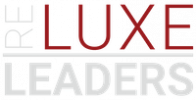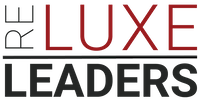Top firms aren’t struggling with lead flow—they’re leaking margin through unclear decision rights, bloated tech, and inconsistent execution. Growth masks it until volume softens or costs rise. If your leaders are firefighting weekly, you don’t have a growth problem; you have an operating model problem.
This brief outlines six concrete moves to tighten your brokerage operating model. Each addresses a failure point we see inside scaling firms. The objective is simple: sharper accountability, cleaner data, faster decisions, and durable margin.
1) Build one source of financial truth—down to contribution margin
Most brokerages run their P&L at an entity level. That hides where value is created and consumed. You need contribution margin by office, team, and top 20% producers, inclusive of marketing subsidies, recruiting costs, referral fees, and platform allocations.
Proof: Market volatility and the higher cost of capital have made capital efficiency the dominant constraint. Emerging Trends in Real Estate 2024 (PwC/ULI) highlights sustained margin pressure and the premium on disciplined cost management across real estate sectors.
Action
- Stand up a contribution-margin dashboard with weekly refresh. Break out CAC (per channel), platform cost per agent, and payback period.
- Classify spend as variable vs. fixed. Tie all incentives to net contribution, not top-line GCI.
- Kill line items that don’t clear a 90-day payback or quantifiable retention lift among your top quartile.
2) Clarify decision rights and escalation paths in 1 page
When recruiting, pricing, marketing, and vendor choices are negotiated ad hoc, you’re eroding speed and consistency. Your brokerage operating model should specify who decides, who inputs, and how conflicts escalate—no more than one page per domain.
Evidence guidance: McKinsey’s work on operating model design underscores that explicit decision rights reduce rework and accelerate execution from strategy to front line. See From strategy to operating model for structure and governance principles.
Action
- Map RACI for five domains: recruiting offers, agent pricing (splits/fees), marketing standards, tech stack changes, and vendor/procurement.
- Set default thresholds. Example: Ops lead approves tools <$1,500 MRR; CFO approval required above, with a 30-day test-and-prove window.
- Institute a 48-hour SLA for cross-functional decisions; unresolved items auto-escalate to weekly leadership.
3) Redesign roles for capacity, not heroics
Elite throughput requires roles built for repeatability. Your highest-value hires in the next 12 months are likely not more producers—they’re RevOps, TC hub leads, and marketing systems operators who compress cycle time.
Operating reality: A lean hub-and-spoke model for transaction management, listing ops, and marketing production lowers cycle time and error rates while protecting agent hours for client work. This is where your brokerage operating model either scales or stalls.
Action
- Stand up a centralized TC hub with SLAs (e.g., contract-to-close checklist completion within 4 hours; compliance QC within 24 hours).
- Hire a revenue operations lead to own pipeline hygiene, conversion analytics, and compensation governance.
- Align variable comp to net contribution per role. Reward time-to-live for listings, contract accuracy rates, and pipeline conversion—never vanity metrics.
4) Rationalize the tech stack and standardize data
Redundant tools and fragmented data inflate cost and cloud decisions. Standardize on a core CRM, marketing automation, and transaction platform. Integrate identity (single sign-on), codify data taxonomy, and publish an analytics layer with a single set of definitions.
What to measure: lead source ROI, speed-to-lead, appointment set rate, signed agreements, contract fall-through, days in stage, and contribution margin by channel. If a platform can’t expose clean data to your warehouse or BI tool, it’s a risk multiplier.
Action
- Tool cut: eliminate any platform that duplicates a core capability or cannot deliver reliable, exportable data.
- Define 12 system-of-record fields (e.g., source, agent of record, team, lead cost, marketing cost) with locked picklists to prevent data drift.
- Publish a weekly executive scorecard; green/yellow/red by KPI and accountable owner.
5) Industrialize operating cadence and reviews
Cadence creates performance. Without it, even strong talent improvises. Lock a drumbeat that connects strategy to action and forces issues into the open.
Action
- Weekly revenue room: 45 minutes on pipeline movement, conversion obstacles, and age-in-stage leaks. Attendance is non-negotiable for accountable owners.
- Monthly P&L by segment: office, team, top producers. Review contribution margin and initiative ROI against plan.
- Quarterly business reviews: reset 3–5 objectives, confirm decision-rights gaps, and archive underperforming initiatives to protect focus.
This cadence gives your brokerage operating model the muscle memory to execute without relitigating priorities each month.
6) Protect margin with compliance, procurement, and risk design
Margin is lost quietly: non-compliant advertising, unmanaged vendor creep, and poorly negotiated contracts. Centralize standards and purchasing to convert chaos into control.
Action
- Compliance: standardize listing/advertising templates and mandate pre-flight checks. Maintain a single policy library with version control and attestation logs.
- Procurement: consolidate vendors, negotiate multi-entity agreements, and require quarterly business reviews with measurable service levels. No contract without a measurable outcome.
- Risk: run scenario drills quarterly (platform outage, regulatory change, data breach). Define communication trees and recovery SLAs.
What to stop doing now
- Custom deals that distort the P&L. If an exception isn’t margin accretive within 90 days, unwind it.
- Stacking point solutions to chase features. Standardize first; extend second.
- Reporting without ownership. A metric without a named owner is theater.
What to start doing next week
- Publish your operating model one-pager (decision rights, cadence, KPIs) to leadership and team leads.
- Turn on contribution-margin reporting and kill two low-yield subsidies.
- Set a 60-day tech rationalization sprint with a hard savings target.
Why this works
An operating model is the bridge between strategy and execution. When you define decision rights, standardize data, and align incentives to contribution margin, you reduce cycle time and noise. The result is consistent throughput and clearer capital allocation. For reference frameworks on governance and decision design, see From strategy to operating model. For macro context on industry pressure and cost discipline, review Emerging Trends in Real Estate 2024.
How RE Luxe Leaders® operationalizes this
RE Luxe Leaders® (RELL™) works with elite operators to codify, implement, and measure the brokerage operating model—P&L instrumentation, role architecture, cadence, and procurement discipline. If you want to see how we structure decision rights and contribution-margin governance, review the latest briefs on RE Luxe Leaders® Insights.
Conclusion
You don’t need more initiatives; you need fewer, enforced with precision. A brokerage operating model built on contribution margin, clear decision rights, standardized data, and a hard cadence will out-execute bigger brands with looser systems. This is the work that compounds—because it turns leadership attention into throughput, not noise.





